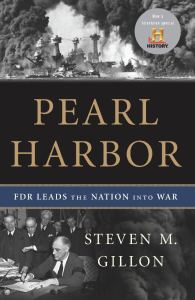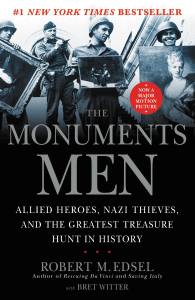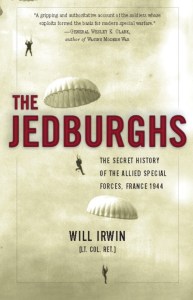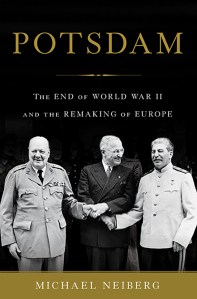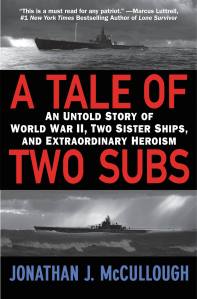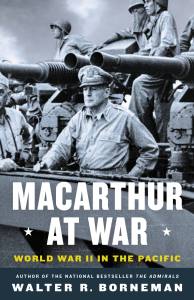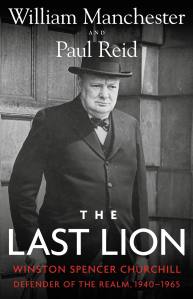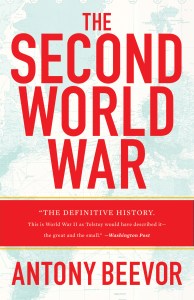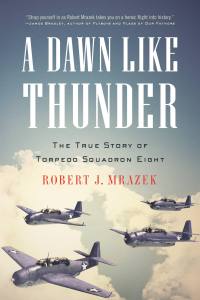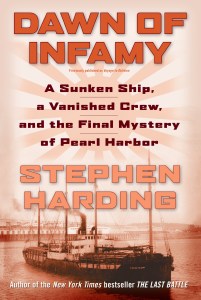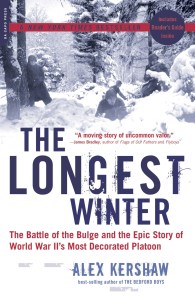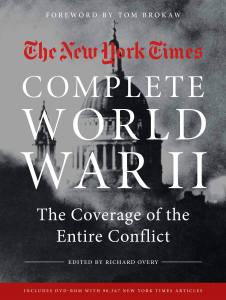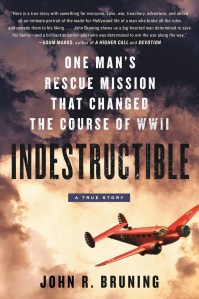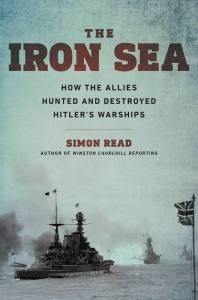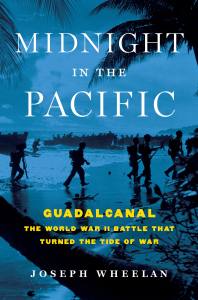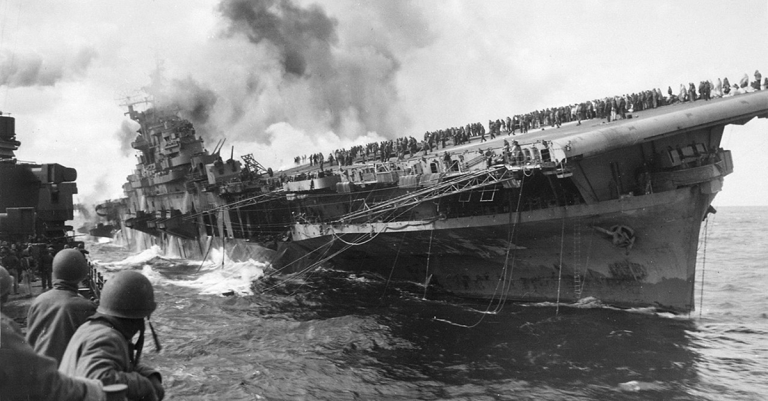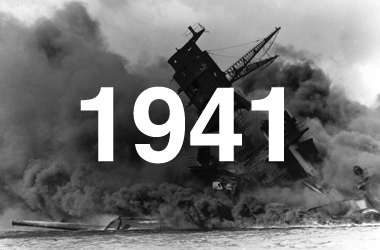Remembering Pearl Harbor
Take time to remember and honor the 2,403 Americans who lost their lives during the attack on Pearl Harbor with this list books that reveal the deep and emotional impact that tragic day left on the world.
Pearl Harbor explores the anxious and emotional events surrounding the attack on Pearl Harbor, showing how the president and the American public responded in the pivotal twenty-four hours that followed, a period in which America burst from precarious peace into total war.
The book that serves as the basis for the acclaimed George Clooney major motion picture, The Monuments Men.
At the same time Adolf Hitler was attempting to take over the western world, his armies were methodically seeking and hoarding the finest art treasures in Europe.
The Fuhrer had begun cataloguing the art he planned to collect as well as the art he would destroy: "degenerate" works he despised.
In a race against time, behind enemy lines, often unarmed, a special force of American and British museum directors, curators, art historians, and others, called the Monuments Men, risked their lives scouring Europe to prevent the destruction of thousands of years of culture.
Focusing on the eleven-month period between D-Day and V-E Day, this fascinating account follows six Monuments Men and their impossible mission to save the world's great art from the Nazis.
After Germany’s defeat in World War II, Europe lay in tatters. Millions of refugees were dispersed across the continent. Food and fuel were scarce. Britain was bankrupt, while Germany had been reduced to rubble. In July of 1945, Harry Truman, Winston Churchill, and Joseph Stalin gathered in a quiet suburb of Berlin to negotiate a lasting peace: a peace that would finally put an end to the conflagration that had started in 1914, a peace under which Europe could be rebuilt.
The award-winning historian Michael Neiberg brings the turbulent Potsdam conference to life, vividly capturing the delegates’ personalities: Truman, trying to escape from the shadow of Franklin Roosevelt, who had died only months before; Churchill, bombastic and seemingly out of touch; Stalin, cunning and meticulous. For the first week, negotiations progressed relatively smoothly. But when the delegates took a recess for the British elections, Churchill was replaced-both as prime minster and as Britain’s representative at the conference-in an unforeseen upset by Clement Attlee, a man Churchill disparagingly described as “a sheep in sheep’s clothing.” When the conference reconvened, the power dynamic had shifted dramatically, and the delegates struggled to find a new balance. Stalin took advantage of his strong position to demand control of Eastern Europe as recompense for the suffering experienced by the Soviet people and armies. The final resolutions of the Potsdam Conference, notably the division of Germany and the Soviet annexation of Poland, reflected the uneasy geopolitical equilibrium between East and West that would come to dominate the twentieth century.
As Neiberg expertly shows, the delegates arrived at Potsdam determined to learn from the mistakes their predecessors made in the Treaty of Versailles. But, riven by tensions and dramatic debates over how to end the most recent war, they only dimly understood that their discussions of peace were giving birth to a new global conflict.
At the end of World War II, several unlikely survivors would tell a tale of endurance against these amazing reversals of fortune. For one officer in particular, who knew that being captured could have meant losing the war for the allies, his struggle was not in surviving, but in sealing his own fate in a heartbreaking act of heroism which culminated in the nation’s highest tribute, the Medal of Honor.
Sculpin Lt. Commander John Phillip Cromwell was one of the few who knew that American Naval Intelligence had succeeded in cracking Japan’s top-secret codes. Cromwell also knew that if the Japanese confirmed this by torturing him, it would force Naval Intelligence to change their encryption, which would potentially change the course of the war. This is Cromwell’s story as well.
The incredible interconnection of the Sculpin and the Sailfish has been thoroughly researched by Jonathan McCullough. Through access to the few living survivors, scores of oral histories, never-before translated Japanese war documents, and interviews with Navy veterans, McCullough delivers a gripping and, intimate account for the reader.
World War II changed the course of history. Douglas MacArthur changed the course of World War II. Macarthur at War will go deeper into this transformative period of his life than previous biographies, drilling into the military strategy that Walter R. Borneman is so skilled at conveying, and exploring how personality and ego translate into military successes and failures.
Architect of stunning triumphs and inexplicable defeats, General MacArthur is the most intriguing military leader of the twentieth century. There was never any middle ground with MacArthur. This in-depth study of the most critical period of his career shows how his influence spread far beyond the war-torn Pacific.
A Finalist for the Gilder Lehrman Prize for Military History at the New York Historical Society
Spanning the years of 1940-1965, The Last Lion picks up shortly after Winston Churchill became Prime Minister-when his tiny island nation stood alone against the overwhelming might of Nazi Germany. The Churchill conjured up by William Manchester and Paul Reid is a man of indomitable courage, lightning-fast intellect, and an irresistible will to action.
The Last Lion brilliantly recounts how Churchill organized his nation’s military response and defense, compelled FDR into supporting America’s beleaguered cousins, and personified the “never surrender” ethos that helped the Allies win the war, while at the same time adapting himself and his country to the inevitable shift of world power from the British Empire to the United States.
More than twenty years in the making, The Last Lion presents a revelatory and unparalleled portrait of this brilliant, flawed, and dynamic leader. This is popular history at its most stirring.
Over the past two decades, Antony Beevor has established himself as one of the world’s premier historians of WWII. His multi-award winning books have included Stalingrad and The Fall of Berlin 1945. Now, in his newest and most ambitious book, he turns his focus to one of the bloodiest and most tragic events of the twentieth century, the Second World War.
In this searing narrative that takes us from Hitler’s invasion of Poland on September 1st, 1939 to V-J day on August 14, 1945 and the war’s aftermath, Beevor describes the conflict and its global reach — one that included every major power. The result is a dramatic and breathtaking single-volume history that provides a remarkably intimate account of the war that, more than any other, still commands attention and an audience.
Thrillingly written and brilliantly researched, Beevor’s grand and provocative account is destined to become the definitive work on this complex, tragic, and endlessly fascinating period in world history, and confirms once more that he is a military historian of the first rank.
Thirty-five American men — many flying outmoded aircraft — changed the course of the war, going on to become the war’s most decorated naval air squadron, while suffering the heaviest losses in U.S. naval aviation history.
Mrazek paints moving portraits of the men in the squadron, and exposes a shocking cover-up that cost many lives. Filled with thrilling scenes of battle, betrayal, and sacrifice, A Dawn Like Thunder is destined to become a classic in the literature of World War II.
When Billy Hobbs and his fellow Hellcat aviators from Air Group 88 lifted off from the venerable Navy carrier USS Yorktown early on the morning of August 15, 1945, they had no idea they were about to carry out the final air mission of World War II. Two hours later, Yorktown received word from Admiral Nimitz that the war had ended and that all offensive operations should cease. As they were turning back, twenty Japanese planes suddenly dove from the sky above them and began a ferocious attack. Four American pilots never returned—men who had lifted off from the carrier in wartime but were shot down during peacetime.
Drawing on participant letters, diaries, and interviews, newspaper and radio accounts, and previously untapped archival records, historian and prolific author of acclaimed Pacific theater books, including Tin Can Titans and Hell from the Heavens, John Wukovits tells the story of Air Group 88's pilots and crew through their eyes. Dogfight over Tokyo is written in the same riveting, edge-of-your-seat style that has made Wukovits's previous books so successful. This is a stirring, one-of-a-kind tale of naval encounters and the last dogfight of the war—a story that is both inspirational and tragic.
On December 7, 1941, even as Japanese carrier-launched aircraft flew toward Pearl Harbor, a small American cargo ship chartered by the Army reported that it was under attack by a submarine halfway between Seattle and Honolulu. After that one cryptic message, the humble lumber carrier Cynthia Olson and her crew vanished without a trace, their disappearance all but forgotten as the mighty warships of the U.S. Pacific Fleet burned.
The story of the Cynthia Olson‘s mid-ocean encounter with the Japanese submarine I-26 is both a classic high-seas drama and one of the most enduring mysteries of World War II. Did I-26‘s commander, Minoru Yokota, sink the freighter before the attack on Pearl Harbor began? Did the cargo ship’s 35-man crew survive in lifeboats that drifted away into the vast Pacific, or were they machine-gunned to death? Was the Cynthia Olson the first American casualty of the Pacific War, and could her SOS have changed the course of history?
Based on years of research, Dawn of Infamy explores both the military and human aspects of the Cynthia Olson story, bringing to life a complex tale of courage, tenacity, hubris, and arrogance in the opening hours of America’s war in the Pacific.
On a cold morning in December, 1944, deep in the Ardennes forest, a platoon of eighteen men under the command of twenty-year-old lieutenant Lyle Bouck were huddled in their foxholes trying desperately to keep warm. Suddenly, the early morning silence was broken by the roar of a huge artillery bombardment and the dreadful sound of approaching tanks. Hitler had launched his bold and risky offensive against the Allies-his “last gamble”-and the small American platoon was facing the main thrust of the entire German assault. Vastly outnumbered, they repulsed three German assaults in a fierce day-long battle, killing over five hundred German soldiers and defending a strategically vital hill. Only when Bouck’s men had run out of ammunition did they surrender to the enemy. As POWs, Bouck’s platoon began an ordeal far worse than combat-survive in captivity under trigger-happy German guards, Allied bombing raids, and a daily ration of only thin soup. In German POW camps, hundreds of captured Americans were either killed or died of disease, and most lost all hope. But the men of Bouck’s platoon survived-miraculously, all of them. Once again in vivid, dramatic prose, Alex Kershaw brings to life the story of some of America’s little-known heroes-the story of America’s most decorated small unit, an epic story of courage and survival in World War II, and one of the most inspiring stories in American history.
The Times’ complete coverage of World War II is now available for the first time in this unique package. Hundreds of the most riveting articles from the archives of the Times including firsthand accounts of major events and little-known anecdotes have been selected for inclusion in The New York Times: The Complete World War II. The book covers the biggest battles of the war, from the Battle of the Bulge to the Battle of Iwo Jima, as well as moving stories from the home front and profiles of noted leaders and heroes such as Winston Churchill and George Patton.
A respected World War II historian and writer, editor Richard Overy guides readers through the articles, putting the events into historical context. The enclosed DVD-ROM gives access to more day-by-day coverage of World War II in The New York Times — from the invasion of Poland to V-J day with access to over 98,000 articles.
Beautifully designed and illustrated with hundreds of maps and historical photographs, it’s the perfect gift for any war, politics, or history buff.
From the knife fights and smuggling runs of his youth to his fiery days as a pioneering naval aviator, Paul Irving “Pappy” Gunn played by his own set of rules and always survived on his wits and fists. But when he fell for a conservative Southern belle, her love transformed him from a wild and reckless airman to a cunning entrepreneur whose homespun engineering brilliance helped launch one of the first airlines in Asia.
Pappy was drafted into MacArthur’s air force when war came to the Philippines; and while he carried out a top-secret mission to Australia, the Japanese seized his family. Separated from his beloved wife, Polly, and their four children, Pappy reverted to his lawless ways. He carried out rescue missions with an almost suicidal desperation. Even after he was shot down twice and forced to withdraw to Australia, he waged a one-man war against his many enemies — including the American high command and the Japanese–and fought to return to the Philippines to find his family.
Without adequate planes, supplies, or tactics, the U.S. Army Air Force suffered crushing defeats by the Japanese in the Pacific. Over the course of his three-year quest to find his family, Pappy became the renegade who changed all that. With a brace of pistols and small band of loyal fol,lowers, he robbed supply dumps, stole aircraft, invented new weapons, and modified bombers to hit harder, fly farther, and deliver more destruction than anything yet seen in the air. When Pappy’s modified planes were finally unleashed during the Battle of the Bismarck Sea, the United States scored one of the most decisive victories of World War II.
Taking readers from the blistering skies of the Pacific to the jungles of New Guinea and the Philippines to one of the the war’s most notorious prison camps, Indestructible traces one man’s bare-knuckle journey to free the people he loved and the aerial revolution he sparked that continues to resonate across America’s modern battlefields.
From early August until mid-November of 1942, US Marines, sailors, and pilots struggled for dominance against an implacable enemy: Japanese soldiers, inculcated with the bushido tradition of death before dishonor, avatars of bayonet combat — close-up, personal, and gruesome. The glittering prize was Henderson Airfield. Japanese planners knew that if they neutralized the airfield, the battle was won. So did the Marines who stubbornly defended it.
The outcome of the long slugfest remained in doubt under the pressure of repeated Japanese air, land, and sea operations. And losses were heavy. At sea, in a half-dozen fiery combats, the US Navy fought the Imperial Japanese Navy to a draw, but at a cost of more than 4,500 sailors. More American sailors died in these battles off Guadalcanal than in all previous US wars, and each side lost 24 warships. On land, more than 1,500 soldiers and Marines died, and the air war claimed more than 500 US planes. Japan’s losses on the island were equally devastating — starving Japanese soldiers called it “the island of death.”
But when the attritional struggle ended, American Marines, sailors, and airmen had halted the Japanese juggernaut that for five years had whirled through Asia and the Pacific. Guadalcanal was America’s first major ground victory against Japan and, most importantly, the Pacific War’s turning point.
Published on the 75th anniversary of the battle and utilizing vivid accounts written by the combatants at Guadalcanal, along with Marine Corps and Army archives and oral histories, Midnight in the Pacific is both a sweeping narrative and a compelling drama of individual Marines, soldiers, and sailors caught in the crosshairs of history.
What to Read Next
By clicking ‘Sign Up,’ I acknowledge that I have read and agree to Hachette Book Group’s Privacy Policy and Terms of Use
